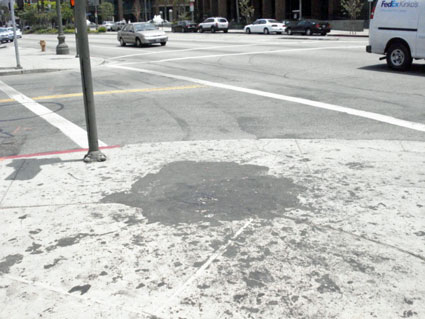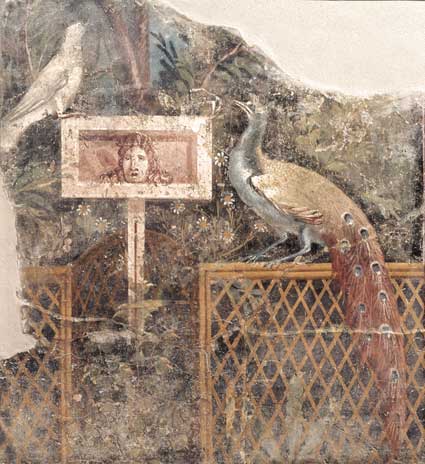The first thing I noticed when visiting Pompeii ten years ago was the smell of sulfur in the air. The scent serves as a current reminder that Mount Vesuvius is still an active volcano prone to eruption. If you have ever visited LACMA on a hot summer day by way of the Rancho La Brea Tar Pits, you can imagine a similar repugnant odor—at times you can even witness the asphalt bubble up from the grass and seep up through the cracks in the sidewalk around the area.

Corner of Curson and Wilshire
The natural elements surrounding the areas of Pompeii and LACMA share a common thread: the volcanic ash from Mt. Vesuvius and the asphalt from the Tar Pits helped preserve the objects trapped in their respective areas for thousands of years. Fortunately for us, these finds help today’s public learn about the art historic and prehistoric past.
The asphalt from the imperceptible Tar Pits aided in maintaining the bones of the animals as the sticky residue trapped and encompassed any living thing unfortunate enough to get stuck in it, allowing modern archaeologists to examine the remains and piece together a timeline of the past. For example, the wall full of Dire Wolf skulls at the Page Museum next to LACMA reveals that a number of this species thrived in this area at a given time, perhaps even preying on the smaller animals stuck in the pits.
Similarly, the eruption of Mount Vesuvius in 79 AD caused layers upon layers of volcanic ash to fall on the towns around the Bay of Naples, virtually encapsulating the city of Pompeii. The mounds of ash shielded the city, stunting its deterioration from the outdoor elements until modern organized excavations began in the 1700s.

Peacock on a garden fence, 1st century BC-1st century AD, Pompeii
Particularly in terms of art history, the archaeological finds of Pompeii disclose a fascinating look into the life of ancient Rome. As our current Pompeii exhibition focuses on aspects of the Roman villa, the viewers are privy to the finest quality of art produced at the time since the wealthy patrons who could afford lavish dwellings could also sensibly afford to decorate them. Through frescoes depicting exotic birds signifying opulence, mosaics reflecting admired Greek philosophy, drinking vessels, sculpture, water fountains, and several other villa-related objects, today’s audience can get a glimpse into a flourishing, complex civilization approximately two thousand years prior defined by social rank, aesthetic, and cultural function through its art—and yet still vulnerable to its environs. While the show presents a vast amount discovered, it’s telling that with portions of Pompeii still unexcavated, there is still so much to learn.



